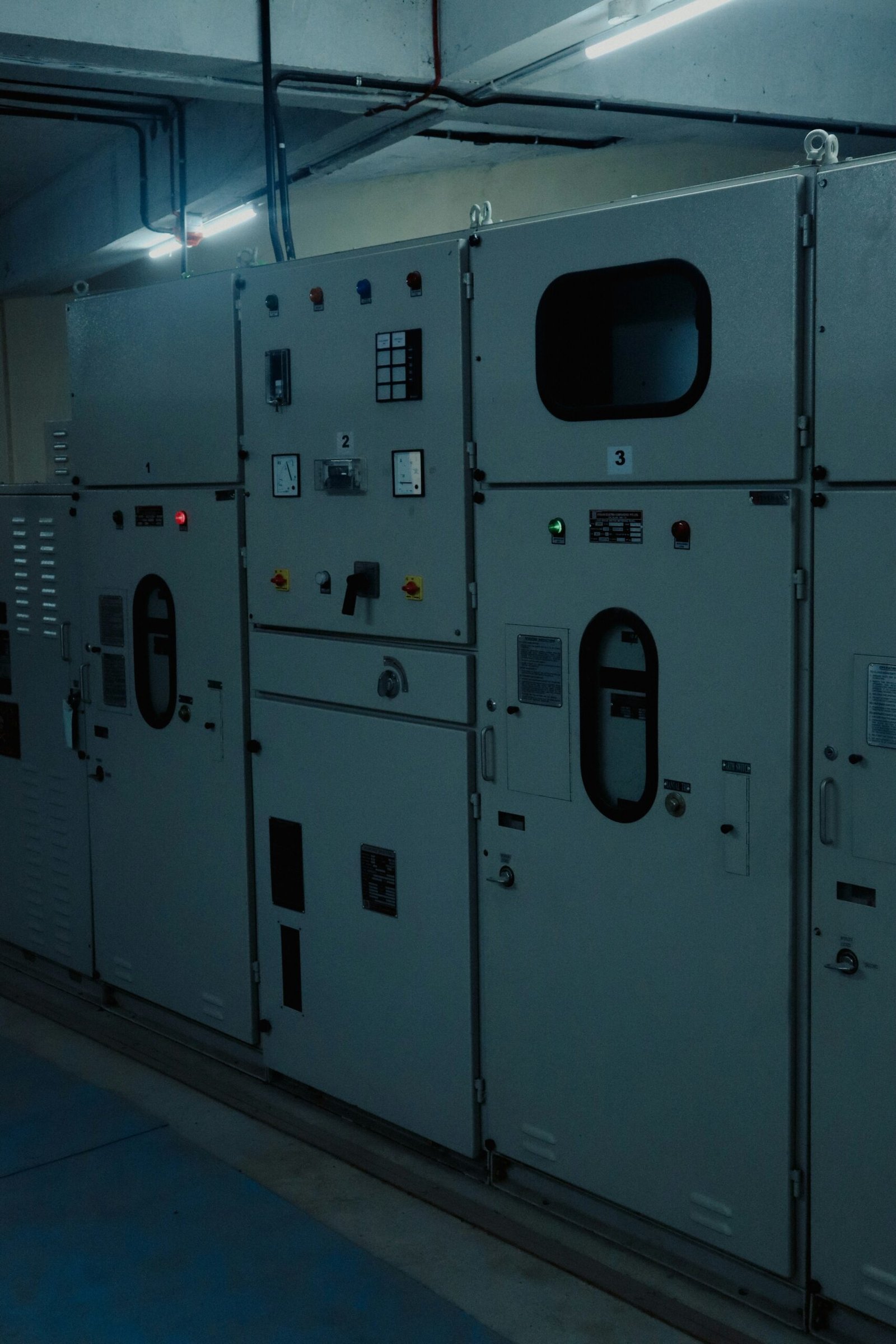“Discover diesel generator maintenance services and learn what essential tasks keep my generator running smoothly!”
Keeping my diesel generator in tip-top shape with diesel maintenance services is no joke. Without regular TLC, you can kiss that dependable power goodbye and say hello to unexpected blackouts.
Rolling through my maintenance checklist like clockwork guarantees my generator’s got my back, especially during those pesky power cuts.
Carbon monoxide? No, thank you! A well-placed generator with regular checkups keeps those nasty fumes away, ensuring they drift outdoors rather than turning my space into a danger zone. Don’t skimp on this step unless you enjoy flirting with CO exposure—spoiler: it’s bad news.
My go-to move is setting up a maintenance checklist. Think of it as an insurance policy against losing power when I need it most. I’m talking daily to annual tasks: checking fluids (yep, generators need their liquids), scanning for leaks, making sure the battery’s not toast, and inspecting filters and wiring. Sounds like a lot? Well, it beats the heck out of winging it during an outage.
Preventative maintenance is my MVP in the generator game. Regular check-ups let techs nip issues in the bud—like a faulty battery tester or a wonky combustion engine—before they morph into full-blown nightmares. Plus, routine upkeep is the golden ticket to boosting efficiency and prolonging my generator’s life span. After all, ain’t nobody got time for equipment drama when the power’s out.
Types of Generator Fuel Sources

You got choices when it comes to generator fuel: diesel or natural gas. Each one comes with its unique setup, including a fuel system and a hardworking engine.
A quick side-by-side on these fuel types:
| Fuel Type | Key Features |
| Diesel | Built for reliability and marathon sessions |
| Natural Gas | Wants spark plugs and lights easily |
Knowing the ins and outs helps me pick the backup generator that’s up to the task. Diesel’s got the secret sauce for steady power and efficiency, while natural gas is the cleaner, easier-to-top-off option. Both have their selling points, so I’ve got to match them up with my needs to get that perfect fuel fit.
All in all, a good grip on maintenance and fuel choices keeps everything running like a charm. Forget the panic—my generator’s ready for whatever comes its way!
Creating a Maintenance Checklist
Keeping a diesel generator in top-notch shape isn’t just something “nice to do”—it’s essential if you want it to keep humming along for a long time. I’ve learned that putting together a good old-fashioned checklist helps me stay on track, making sure I don’t skip a beat when it comes to the important stuff and spacing between blocks. Here’s the scoop on what needs to be done daily, weekly, monthly, and yearly, plus some telltale signs that your generator might be trying to tell you something’s not quite right.
Daily, Weekly, Monthly, and Annual Tasks
Having a plan in place is like having a good insurance policy—you’re covered when things get dicey. Here’s the rundown on what I do and when:
| Maintenance Frequency | Tasks |
| Daily | – Peek at the fluid levels (oil and coolant) – Scout for leaks – Give the battery a quick eyeballing – Make sure wires and connections are snug |
| Weekly | – Scope out filter condition; swap it if needed – Fire up the generator for half an hour so the fuel doesn’t go funky – Clear any junk around the engine and radiator – Take a look in the fuel tank to see what’s cooking |
| Monthly | – Do a load bank test to check if it’s playing nice – Check out the alternator and starter connections – Give it the beans: One hour under full load – Review logs to spot any funny business |
| Annually | – Go over the whole shebang from top to bottom – Change out the oil and filter – Swap out any worn-out parts – Inspect the fuel lines and hoses for wear and tear |
Sticking with these chores will help me spot issues before they become wallet-draining headaches (ServiceChannel, CS Diesel Generators).
Indicators of Generator Issues
Generators sometimes drop hints they’re in trouble. Here’s what I look out for to avoid getting caught with my pants down:
| Indicator | Possible Issue |
| Strange noises (grinding, knocking) | Something might be loose or the mechanical bits aren’t playing nice |
| Too much smoke | Might be running hot or having problems with burning fuel properly |
| Warning lights on control panel | Could point to electrical glitches or operational hiccups |
| Starting takes forever or won’t start | Probably the battery or starter acting up |
| Fuel leaks | Fuel lines might be getting old or seals could be giving up |
Knowing these signs helps me nip problems in the bud, keeping the generator cranking out power without missing a beat. Regular check-ups help catch early red flags, whether it’s with the heart of the machine, like the engine or the DC system (PNNL, Curtis Power Solutions).
Essential Maintenance Practices

Monitoring Battery Charge Rates
Keeping the batteries in check has been a game-changer for keeping my diesel generator humming along as expected. Throwing together a generator maintenance list? Trust me, it works wonders to organize tasks and keep everything in tip-top shape. My go-to checklist includes those daily must-dos like checking on fluid levels, sniffing around for leaks, and making sure the battery is healthy and kicking. Keeping a watchful eye is key—last thing anyone wants is a power outage when you’re counting on that generator to be your hero.
| Task | How Often |
| Check fluid levels | Daily |
| Inspect for leaks | Daily |
| Assess battery health | Daily |
| Battery charge rates | Weekly |
Managing Fuel Quality
Keeping an eye on fuel quality is a biggie in making sure the generator keeps on purring. Regular spot-checks and maintenance routines not only lengthen its life but make sure there’s power right when you need it. Based on what I’ve learned, a squeaky clean fuel system means your generator’s working at its best and burning fuel efficiently.
Start with keeping that fuel tank spotless and swapping the fuel supply when it seems right. Changing out the fuel filter when needed is a clutch move to block any nasty stuff that could cause headaches. This little routine not only boosts performance but acts as a safeguard against any hiccups from shoddy fuel quality.
| Maintenance Task | How Often |
| Clean the fuel tank | Monthly |
| Change fuel supply | As needed |
| Change fuel filter | Every 200 hours or if needed |
Optimal Maintenance Schedule
Setting up a maintenance schedule that’s just right is pretty much essential if you want your diesel generator to stay reliable and steer clear of any unplanned mishaps. Regular care is more than just boosting its lifespan; it’s like insurance against the unexpected. Following those manufacturer guidelines based on how much it’s used is something I stick by faithfully.
Routine check-ups make sure everything runs smoothly and can save you a headache down the line. Knowing my generator’s specific quirks based on usage keeps it smooth sailing, so to speak.
| Activity | Recommended How Often |
| General inspection | Every 50 hours |
| Oil change | Every 150 hours |
| Fuel filter replacement | Every 200 hours |
| Comprehensive maintenance check | Annually |
By embedding these practices into my routine, I make sure that my diesel generator remains a steadfast and efficient buddy throughout its life, never letting me down in critical times.
Troubleshooting and Repair Costs
When it comes to diesel generator maintenance, things can get a bit hairy, especially when unexpected issues pop up. I’ve found that knowing the early signs of trouble can be like having a sixth sense for saving both time and money.
Common Signs of Generator Issues
If your generator’s up to no good, it’ll probably try to tell you in its own quirky way. Spotting these signals early on really helps keep things humming along. Here’s what’s usually gone AWOL:
| Indicator | Description |
| Battery Tantrum | So your generator won’t start, huh? A moody battery might be to blame, screaming for some TLC. |
| Coolant Drips | Spot any drips? They’re like a leaky roof letting you know overheating’s on the horizon. |
| Fuel Gauge Yawns | If your fuel’s running low, expect your generator to be a pain in starting and maybe even stall. |
| No Go | If it won’t play nice and start, you’re likely in for some electrical or mechanical sleuthing. |
| Fuel Flow Flop | Clogged lines are like arteries clogged with cheeseburgers—they stop the show. |
| Plot Twists | If your generator keeps stalling, there’s drama under the hood—likely with fuel or the engine. |
These hiccups often arise from playing a risky game of “how long can I ignore maintenance?” (ServiceChannel, Powerlink Energy).
Addressing Overheating and Wet Stacking
Overheating’s a real hot-headed problem for diesel generators, leading to mayhem like melting bearings, blown gaskets, or warped rotors (Powerlink Energy). Keeping an eye on your thermostat and radiator is a must to dowse those flames.
Then there’s the quirky issue of wet stacking. Imagine running your generator at less than 30% of its mojo for too long—what you get is incomplete fuel combustion and a sulking exhaust puffing out white smoke (LinkedIn).
To straighten out wet stacking woes, crank things up regularly to above 30% capacity. This bit of strategy gets the engine hot enough for proper combustion and cuts down on the build-up of unburnt fuel, leaving your exhaust system peppy (LinkedIn).
By catching these telltale signs and sticking to maintenance tips, I manage to keep my diesel generator running like a dream, fully prepped for whatever life throws at it.









+ There are no comments
Add yours